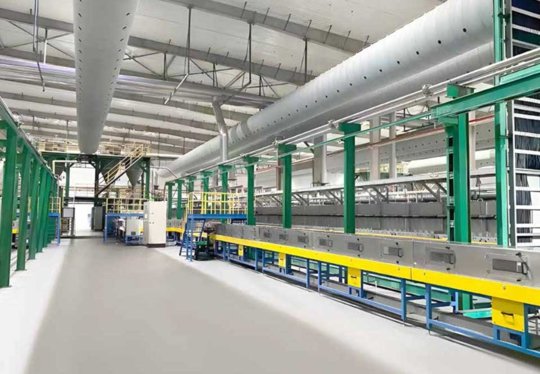Calcination is a fundamental process in various industries, including metallurgy, ceramics, and more recently, in the realm of battery material manufacturing. This thermal treatment process involves heating a material to high temperatures in a controlled environment to drive off volatile components, remove impurities, and initiate chemical reactions that alter the material's properties. In the context of battery materials, calcination plays a pivotal role in transforming raw materials into high-performance, energy-dense compounds that power our modern world. In this article, we will delve into what calcination is and its specific significance in battery material production.

Calcination, derived from the Latin word "calcinare," meaning "to burn lime," is a thermal treatment process that has been used for centuries to refine materials and create new compounds. The primary objective of calcination is to drive off volatile compounds, such as water, carbon dioxide, and organic matter, while inducing controlled chemical reactions within the material.
The calcination process involves subjecting the material to high temperatures, typically in the range of 700°C to 1,100°C, inside a furnace or kiln. The choice of temperature and atmosphere (oxidizing or reducing) is crucial and depends on the desired outcome and the material being processed. The process is highly controlled to ensure that the material is transformed without degradation or combustion.
Calcination is a vital step in the production of battery materials, where precise control of material properties is critical to enhancing battery performance. Battery materials, including cathode materials, anode materials, and electrolytes, undergo calcination to achieve the desired chemical composition, structure, and electrochemical properties. The following sections will explore the significance of calcination in battery material manufacturing:
In the context of cathode materials, such as lithium cobalt oxide (LiCoO2), lithium iron phosphate (LiFePO4), and nickel manganese cobalt oxide (NMC), calcination serves multiple purposes. First, it removes any moisture and other volatile impurities from the precursor materials. Second, it initiates solid-state reactions that transform the raw materials into the desired cathode material with the right crystal structure and composition. This is critical for optimizing energy density, stability, and cycle life in lithium-ion batteries.
For example, in the production of LiCoO2, cobalt-containing precursors are calcined to remove carbonates and water, leading to the formation of the stable LiCoO2 phase. The control of temperature and atmosphere during calcination influences the particle size, crystal structure, and electrochemical performance of the cathode material.
Calcination is equally essential for anode materials like graphite and silicon. In the case of graphite, natural or synthetic graphite flakes are subjected to high-temperature calcination in an inert atmosphere to eliminate impurities and improve the crystalline structure. This enhances the anode's electrical conductivity and stability, making it an ideal choice for lithium-ion batteries.
For emerging anode materials like silicon, calcination is a crucial step in preventing the material from expanding and disintegrating during the charge-discharge cycles. Through controlled calcination, silicon nanoparticles can be transformed into more stable silicon-graphite composites, significantly increasing the anode's capacity and cycle life.
Calcination also finds application in the production of solid-state electrolytes and separator materials used in advanced battery technologies. Solid-state electrolytes are being explored as alternatives to liquid electrolytes in lithium-ion batteries due to their potential for higher energy density and improved safety. Calcination of precursor materials is critical in creating these solid-state electrolytes, allowing for the formation of a stable, ion-conductive crystalline structure.
Separator materials, which keep the cathode and anode apart in a battery cell while allowing ion transport, can also benefit from calcination. Calcination can enhance the thermal and mechanical properties of separator materials, making them more robust and heat-resistant.
The significance of calcination in battery material manufacturing can be summarized in the following benefits:
Calcination is a critical process in battery material manufacturing, enabling the production of high-performance cathode materials, anode materials, electrolytes, and separators. It plays a pivotal role in improving the electrochemical performance, stability, and tailored properties of these materials, thereby driving advancements in battery technology. As the demand for high-energy-density and long-lasting batteries continues to grow, the importance of calcination in the battery industry is poised to remain central in powering the future.